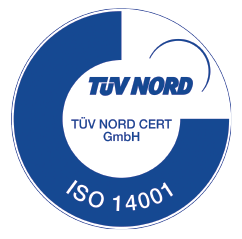
George N. KyriakouMD, PhD, FEBUHead of Minimally Invasive Urologic Surgery, Athens Medical Centre
In Europe, it is the most common type of cancer with an incidence of 214 cases per 1000 men, followed by lung and colorectal cancer (1). Further, prostate cancer is the 2nd cause of death from cancer in the male population (2). Since 1985 there is an increase in the number of deaths from prostate cancer even in countries where it is not so frequent (3).
Prostate cancer most often affects older men and especially in developed countries where life expectancy is greater (4). There are large differences in parts of Europe and, particularly in Sweden, where the age of death is prolonged and death cases related to smoking few in number, prostate cancer is the most common malignancy in the male population, constituting 37% of all new cancer cases in 2004 (5).
Risk Factors
Few have been identified. The three main ones are:
- Advanced age
- Place of origin
- Inheritance
The incidence of prostate cancer increases greatly depending on the number of occurrences in the same family, and up to 5.11 times (6,7). 9% of men with prostate cancer have true heredity (3 or more relatives with disease or at least two of the same family with cancer before age 55 years) (7). Geographically it is found most often to USA and N. Europe and less in South. East Asia (8). Probably therefore exogenous factors affect the risk and progression of disease in clinically important cancer, such as diet, sexual behavior, alcohol consumption, exposure to radiation, chronic inflammation (9,10 ) and occupational exposure (10).
The prostate cancer becomes a candidate carcinoma for exogenous preventive measures, such as dietary and pharmacological prevention, reduced calorie intake and fatty foods, cooked meat, minerals and vitamins (carotenoids, retinoids, vitamins C, D, and E), fruits and vegetables , calcium and selenium etc., but still many studies analyze these factors as potential preventive measures (11). Interestingly, the metabolic syndrome (obesity, hyperlipidemia, diabetes) might be related to prostate diseases such as benign hyperplasia and cancer (12,13). In conclusion, we do not know yet if there is sufficient certainty to recommend dietary measures to reduce the risk of developing prostate cancer (14), but it seems that these measures currently highlighted in men who have relatives with prostate cancer (7,8).
Screening and early diagnosis
A first assessment of PSA has been determined to be in the age of 40, as basic level (15). If PSA is <1ng/ml it is recommended to repeat it after eight years (16). Further, measurement of PSA after 75 years is not recommended because early diagnosis of cancer would not have significant impact on the clinical evolution of the disease (17).
Diagnosis
The main diagnostic tools of prostate cancer are the digital rectal examination, PSA blood test and biopsies.
- Digital rectal examination (DRE)
It is a necessary clinical prostate evaluation and becomes positive when tumor volume is over 0,2 mL. More than 18% of patients are guided to biopsies with suspicious DRE alone irrespective of PSA value, which might be normal or low, and this rate is important. A suspect DRE must lead to biopsies because it is often predictive of more aggressive tumor (18, 19).
- PSA
The truth is that once applied, PSA measurement was a revolution in the detection era of prostate cancer.
It is a protease produced exclusively by prostatic cells. It is specific related to prostate but not only with prostate cancer, because it can increase in several pathologies such as benign prostatic hyperplasia, prostate infection, etc. The higher the value, the greater the chance for prostate cancer. Absolute cutoff does not exist (20,21).
More information can be provided by the Free PSA/PSA ratio, especially when the value of PSA is between 4 and 10 and with negative DRE. 56% of patients with quotient <0.10 had prostate cancer, and only 8% with a quotient> 0.25. It makes no sense to measure the free PSA, when the value of PSA> 10. In addition, free PSA may be varied in large prostates (22). Also important is the increase of PSA velocity (23).
A new biomarker is the PCA3 with its detection in urine after prostatic massage. Elevated levels increase the potential for repeat biopsy when there is strong suspicion of prostate cancer. (24-27).
Prostate biopsies
So far the above diagnostic tests emerge the suspicion of prostate cancer. The definitive diagnosis is performed with prostate biopsies. These are performed with the help of ultrasound through the rectum by applying local anesthesia in the region of the prostate gland. Local anesthesia favorates this diagnostic test very well tolerated. Before proceeding to prostate biopsy should take into account the biological age of the patient, general health satus and the plan of our therapeutic measurements.
The recommendation for prostate biopsies are high PSA levels and suspicious DRE. A first high PSA value might not be an absolute indication for biopsies. PSA measurement should be repeated after a few weeks in the same laboratory and after recommendation for abstinence from ejaculation, prostate manipulations (recent DRE, bladder catheterization, inflammation, etc.), since these conditions alone can increase the value of PSA (28,29).
Problem arises when biopsies are negative, with great suspicion of cancer, even in small focus in the prostate. So when should be repeated biopsies;
A. Continuous increase of PSA
B. Suspect DRE
C. Atypical cells in previous biopsy (ASAP)
D. Existence of extensive high-grade intraepithelial neoplasia in the foregoing biopsies (PIN) (30)
Recently, in cases of suspected malignancy and before prostate biopsies a multiparametric magnetic resonance imaging of prostate is applied. It might detect suspicious areas in the prostate gland with greater sensitivity and accuracy than classic MRI, focus of interest during biopsies.
Surgical treatment - Robotic Surgery
Over the last 10 years, developments in biotechnology have given a significant boost in surgical techniques. Urology eminently have beneficial supply of this evolution by improving the lithotripter, the use of laser, the application of laparoscopic surgery and finally the induction of the robotic da Vinci system.

Laparoscopic Urology
Perhaps it is misunderstood, as a first impression by many patients, that "the robot performs surgery", having entered on scenarios almost of science fiction. The entire procedure depends on the experience, skills and knowledge of the robotic urologist surgeon. The robotic da Vinci system surgery is based on the principles of laparoscopic surgery. Through skin holes, as in laparoscopy, robotic surgical instruments are placed into the abdominal cavity of the patient, which in turn are connected to the arms of the robotic system - thus, the patient is "linked" to the robot. The assistant surgeon also works over the patient.

Assistant surgeon next to the robotic system
The robotic urologist "Surgeon" is sitting at a console away from the patient, which provide an excellent in sharpness three-dimensional surgical field, while surgeon’s movements made via ring fittings are copied and transmitted with absolute precision by the robot. So urologist is operating and the robot is performing.

Robotic surgeon at the console
The cost of the robotic da Vinci system is slightly greater than that of laparoscopic surgery. The learning curve for robotics is less than that of laparoscopy. Between the two pathways, based on the same principles of implementation (surgery through skin holes-monitors-telesurgery) no particular differences exist for specific procedures. The benefit, for example, between robotic and laparoscopic surgery in the treatment of varicocele or renal cyst removal does not differ in favor to robotics, furthermore latter is more expensive.
But for specific procedures, the advantages of robotic surgery are important.
What are really the advantages of robotic surgery and why a patient would prefer to be cured surgically by the da Vinci system?
- The visibility of the surgical field is in multiple growth with excellent sharpness (high definition) and is "three-dimensional", as the surgeon is situated inside the abdominal cavity of the patient.
- The urologist performs surgery without experiencing fatigue from standing and stillness, while seated.

Comfortable surgery for the surgeon with three-dimensional view of the surgical field
- The robotic arms, copying the movements of the surgeon, fully absorb the factor "human trembling hands".
- Robotic camera with its great ability can reach the most inaccessible sites of the surgical field, resulting in the maximum of organs and tissues dissection.
- The da Vinci surgical system provides the greatest surgical ergonomy, with movement to 7 axes, which cannot take place in open and laparoscopic surgery.

Movement to 7 axes
- In addition to the above benefits, robotic surgery offers all the advantages of «minimally invasive surgery », as minimum postoperative pain, reduced metabolic stress, quick hospital discharge, rapid return to daily activities, reduced transfusion rate and excellent cosmetic result.
As said above, the induction of the robotic system has specific indications. Procedures, as radical prostatectomy and partial nephrectomy for selective removing kidney tumors with organ preservation are surgical treatments of choice with the robotic da Vinci system. It is important to be mentioned that in the US 85% of prostate cancer cases are performed by robotic surgery.
In conclusion we should keep in mind the following: a biotechnological instrument has been devised by the human mind, to primarily serve and cure patients, providing benefits in recovery from major diseases with the less hassle. So, such a great surgical tool has to be used by surgeons with experience and knowledge, always based on the rules governing the principles of surgery. The robotic da Vinci system simply complements the skill of the surgeon rather than the latter the robotic system. And it finds perfect indication in localized prostate cancer with the above benefits for patients, but also for the performance of the Urologist.
Robotic Surgery and Prostate Cancer
The most appropriate indication for robotic treatment in urology is localized prostate cancer. This is due to the following reasons:
a. The prostate is an inaccessible organ situated very deeply and low in the pelvis behind the pubic symphysis. The robotic camera and accessories provide significant surgical approach and dissection.
b. The extremely high resolution, the multiple surgical movements and great ergonomy provided by the robotic da Vinci system function as a perfect "tool" in two important parameters combined to this surgery: urinary continence and erectile ability.
These two parameters depend on sufficient maintenance of vessels and erectile nerves (neurovascular bundles), good preservation of the bladder neck, enough long urethral stump, preservation of puboprostatic ligaments and fascia of prostate and pelvis. These anatomical factors contribute in the rapid recovery of continence, as in increased probability of erectile refunction. It is noteworthy that when indicated by oncology rules, bilateral preservation of erectile bundles could rise the erectile recovery even from the first postoperative month, robotically.
Concerning the oncological outcomes, it seems at present by the literature that there is no statistically significant difference between open and robotic prostatectomy. It is important to mention that in cases where prostate cancer should be performed with concomitant removal of pelvic lymph nodes, robotics offer excellent, detailed and rapid lymphadenectomy with low morbidity. Studies also prove a benefit in favor to robotic radical prostatectomy for locally advanced disease, as well as salvage prostatectomy (ie after irradiation).
References
- Boyle P, Ferlay J. Cancer incidence and mortality in Europe 2004. Ann Oncol 2005 Mar;16(3):481-8.
- Jemal A, Siegel R, Ward E, et al. Cancer statistics, 2008. CA Cancer J Clin 2008 Mar-Apr;58(2):71-96.
- Quinn M, Babb P. Patterns and trends in prostate cancer incidence, survival, prevalence and mortality.Part I: international comparisons. BJU Int 2002 Jul;90(2):162-73.
- Parkin DM, Bray FI, Devesa SS. Cancer burden in the year 2000: the global picture. Eur J Cancer 2001Oct;37(Suppl 8):S4-66.
- Persson G, Danielsson M, Rosén M, et al. Health in Sweden: The National Public Health Report 2005.Scand J Public Health 2006; 34(Suppl 67):3-10.
- Jansson KF, Akre O, Garmo H, et al. Concordance of tumor differentiation among brothers with prostate cancer. Eur Urol 2012 Oct;62(4):656-61.
- Hemminki K. Familial risk and familial survival in prostate cancer. World J Urol 2012 Apr;30(2):143-8.
- Kheirandish P, Chinegwundoh F. Ethnic differences in prostate cancer. Br J Cancer 2011 Aug;105(4):481-5.
- Nelson WG, De Marzo AM, Isaacs WB Prostate cancer. N Engl J Med 2003 Jul;349(4):366-81.
- Leitzmann MF, Rohrmann S. Risk factors for the onset of prostatic cancer: age, location, and behavioral correlates. Clin Epidemiol 2012;4:1-11.
- Schmid HP, Engeler DS, Pummer K, et al. Prevention of prostate cancer: more questions than data.Recent Results Cancer Res 2007;174:101-7.
- De Nunzio C, Aronson W, Freedland SJ, et al. The correlation between metabolic syndrome andprostatic diseases. Eur Urol 2012 Mar;61(3):560-70.
- Alcaraz A, Hammerer P, Tubaro A, et al. Is there evidence of a relationship between benign prostatic hyperplasia and prostate cancer? Findings of a literature review. Eur Urol 2009 Apr;55(4):864-73.
- Richman EL, Kenfield SA, Stampfer MJ, et al. Egg, red meat, and poultry intake and risk of lethal prostate cancer in the prostate-specific antigen-era: incidence and survival. Cancer Prev Res (Phila) 2011 Dec;4(12):2110-21.
- Börgermann C, Loertzer H, Hammerer P, et al. [Problems, objective, and substance of early detectionof prostate cancer]. Urologe A 2010 Feb;49(2):181-9. [Article in German]
- Roobol MJ, Roobol DW, Schröder FH. Is additional testing necessary in men with prostate-specific antigen levels of 1.0 ng/mL or less in a population-based screening setting? (ERSPC, section Rotterdam). Urology 2005 Feb;65(2):343-6.
- Schaeffer EM, Carter HB, Kettermann A, et al. Prostate specific antigen testing among the elderly; when to stop? J Urol 2009 Apr:181(4):1606-14;discussion 1613-4.
- Okotie OT, Roehl KA, Han M, et al Characteristics of prostate cancer detected by digital rectal examination only. Urology 2007 Dec;70(6):1117-20.
- Gosselaar C, Roobol MJ, Roemeling S, et al. The role of the digital rectal examination in subsequent screening visits in the European randomized study of screening for prostate cancer (ERSPC),Rotterdam. Eur Urol 2008 Sep;54(3):581-8.
- Stamey TA, Yang N, Hay AR, et al. Prostate-specific antigen as a serum marker for adenocarcinoma ofthe prostate. N Engl J Med 1987 Oct;317(15):909-16.
- Catalona WJ, Richie JP, Ahmann FR, et al. Comparison of digital rectal examination and serum prostate specific antigen in the early detection of prostate cancer: results of a multicenter clinical trial of 6,630 men. J Urol 1994 May;151(5):1283-90.
- Catalona WJ, Partin AW, Slawin KM, et al. Use of the percentage of free prostate-specific antigen to enhance differentiation of prostate cancer from benign prostatic disease: a prospective multicentre clinical trial. JAMA 1998 May 20;279(19):1542-7.
- Carter HB, Pearson JD, Metter EJ, et al. Longitudinal evaluation of prostate-specific antigen levels in men with and without prostate disease. JAMA 1992 Apr 22-29;267(16):2215-20.
- Deras IL, Aubin SM, Blase A, et al. PCA3: a molecular urine assay for predicting prostate biopsy outcome. J Urol 2008 Apr;179(4):1587-92.
- Hessels D, Klein Gunnewiek JMT, van Oort I, et al. DD3 (PCA3)-based molecular urine analysis for the diagnosis of prostate cancer. Eur Urol 2003 Jul;44(1):8-15; discussion 15-6.
- Nakanishi H, Groskopf J, Fritsche HA, et al. PCA3 molecular urine assay correlates with prostate cancer tumor volume: implication in selecting candidates for active surveillance. J Urol 2008 May;179(5):1804-9; discussion 1809-10.
- Hessels D, van Gils MP, van Hooij O, et al Predictive value of PCA3 in urinary sediments in determining clinico-pathological characteristics of prostate cancer. Prostate 2010 Jan 1;70(1):10-6.
- Eastham JA, Riedel E, Scardino PT, et al. Polyp Prevention Trial Study Group. Variation of serum prostate-specific antigen levels: an evaluation of year-to-year fluctuations. JAMA 2003 May 28:289(20):2695-700.
- Stephan C, Klaas M, Muller C, et al. Interchangeability of measurements of total and free prostate specific antigen in serum with 5 frequently used assay combinations: an update. Clin Chem 2006 Jan;52(1):59-64.
- Merrimen JL, Jones G, Walker D, et al. Multifocal high grade prostatic intraepithelial neoplasia is a significant risk factor for prostatic adenocarcinoma. J Urol 2009 Aug;182(2):485-90















